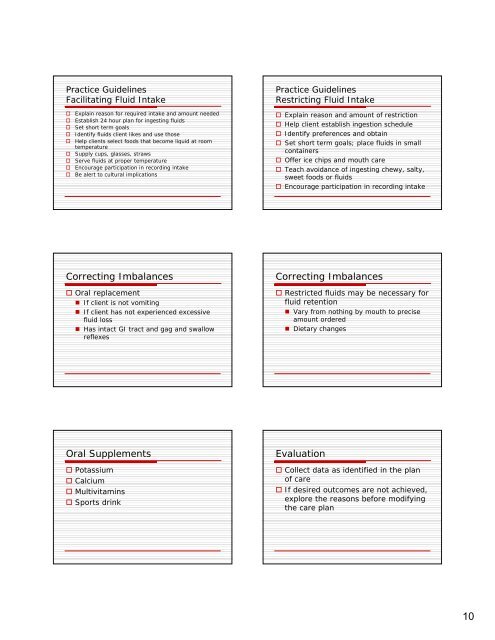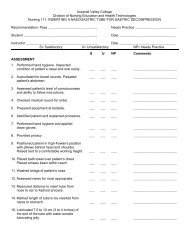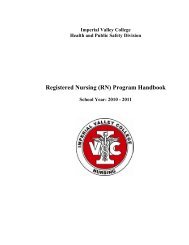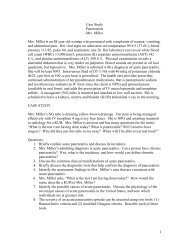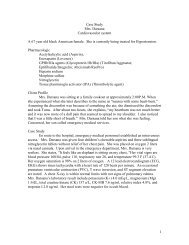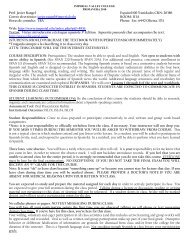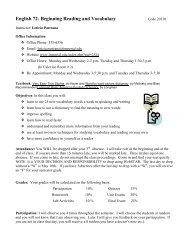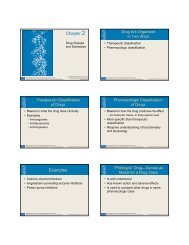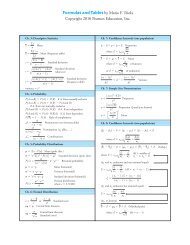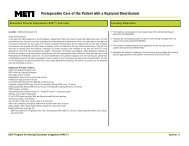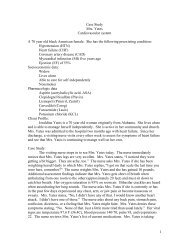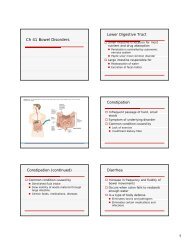Fluid, Electrolyte, and Acid-Base Balance
Fluid, Electrolyte, and Acid-Base Balance
Fluid, Electrolyte, and Acid-Base Balance
You also want an ePaper? Increase the reach of your titles
YUMPU automatically turns print PDFs into web optimized ePapers that Google loves.
Practice GuidelinesFacilitating <strong>Fluid</strong> IntakePractice GuidelinesRestricting <strong>Fluid</strong> IntakeExplain reason for required intake <strong>and</strong> amount neededEstablish 24 hour plan for ingesting fluidsSet short term goalsIdentify fluids client likes <strong>and</strong> use thoseHelp clients select foods that become liquid at roomtemperatureSupply cups, glasses, strawsServe fluids at proper temperatureEncourage participation in recording intakeBe alert to cultural implications Explain reason <strong>and</strong> amount of restriction Help client establish ingestion schedule Identify preferences <strong>and</strong> obtain Set short term goals; place fluids in smallcontainers Offer ice chips <strong>and</strong> mouth care Teach avoidance of ingesting chewy, salty,sweet foods or fluids Encourage participation in recording intakeCorrecting Imbalances Oral replacement• If client is not vomiting• If client has not experienced excessivefluid loss• Has intact GI tract <strong>and</strong> gag <strong>and</strong> swallowreflexesCorrecting Imbalances Restricted fluids may be necessary forfluid retention• Vary from nothing by mouth to preciseamount ordered• Dietary changesOral Supplements Potassium Calcium Multivitamins Sports drinkEvaluation Collect data as identified in the planof care If desired outcomes are not achieved,explore the reasons before modifyingthe care plan10


